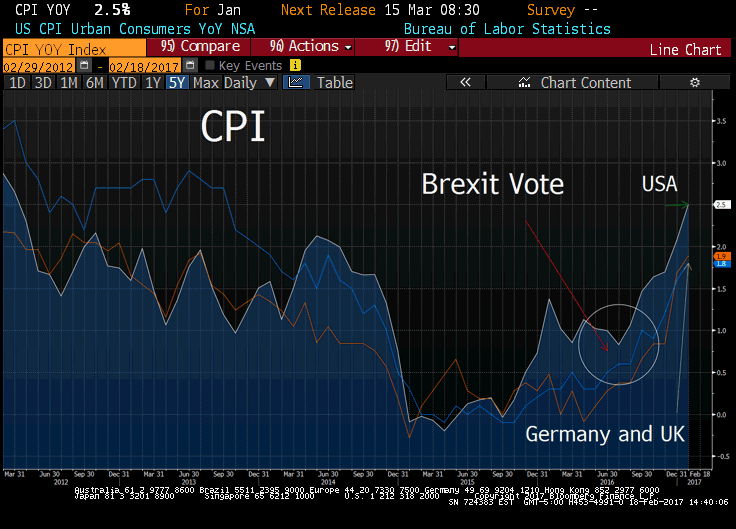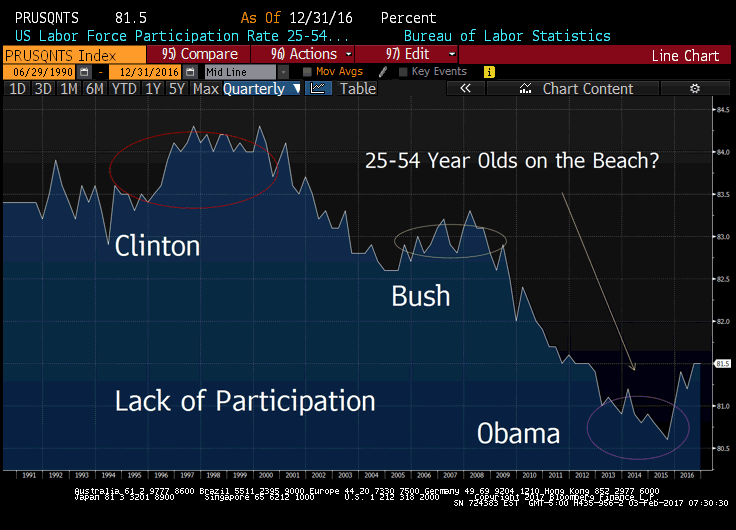Join our Larry McDonald on CNBC’s Trading Nation, this Wednesday at 2:20pm
Don’t miss our next trade idea. Get on the Bear Traps Report Today, click hereThe yield spread on French bonds is accelerating over their German counterpart. As Socialist Party candidate Hamon deepens talks with far Left Melechon, the net winner is France’s anti-Euro skeptic Marie Le Pen.
First Round, French Presidential Election
LePen : 26%
Macron: 23%
Fillon: 19%
Hamon: 15%*
Mélenchon: 12%*
Ipsos
Political Risk Driving Markets
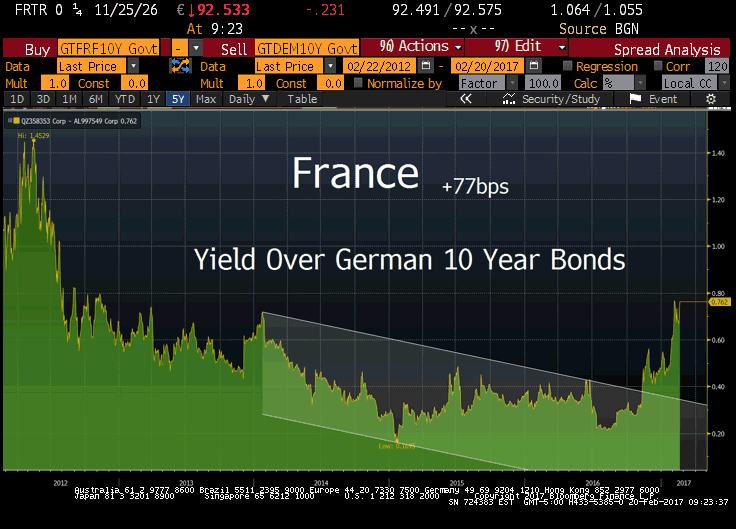
*Yield spread on French bonds accelerating over German (at 77bps, widest since Feb 8-). Socialist Party candidate Hamon deepens talks w far Left Melechon, net benefit to hard line Euro-skeptic Marie Le Pen.
Our Index of 27 Lehman Systemic Risk Indicators is on the rise, very similar to the spring of 2011. Over the years with certainty we can say, credit leads equities. Credit markets were stressed for weeks ahead of major drops in U.S. stocks in 2011, 2012, 2015 and 2016.
Lurking under the surface of European bond markets, capital is piling on bets that will reap large rewards if the risks in the euro zone surge substantially.
Investment Grade Bond Spreads
Europe v US
Feb 2017: +33bps
Feb 2016: -22bps
Bloomberg data
Investment grade bonds in Europe are DRAMATICLY under-performing their U.S. counterparts, even as the ECB has been buying bonds across the Eurozone.
Markets across the continent have started to price in the increased potential for anti-euro candidates to win elections in France and Italy. Recent positioning in German and French bonds are hedges against a blow-up in the risk of a breakup in the common currency,
Two Year France vs. German Bond Yields
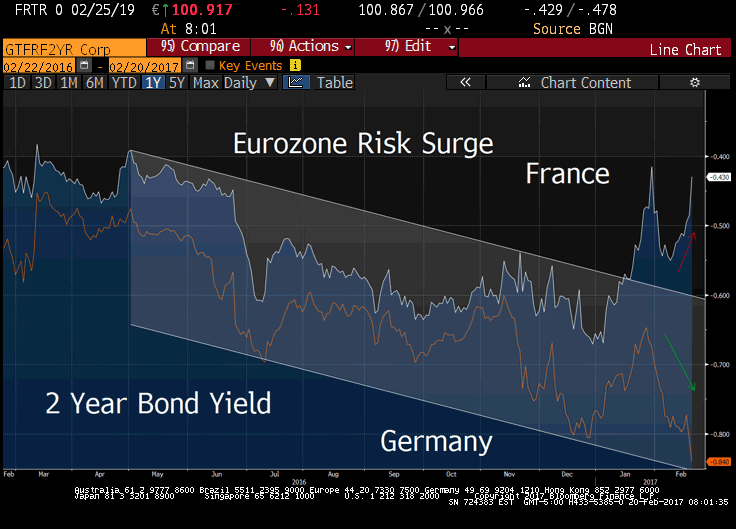 We witnessed this in 2011-12 during the height of the Grexit contagion drama across the Eurozone’s periphery. The front end of the German yield curve has outperformed over the past three weeks, with 6-month and two-year yields dropping 10-14 basis points, while open interest in two-year futures has jumped by more than 100,000 contracts, per Bloomberg data.
We witnessed this in 2011-12 during the height of the Grexit contagion drama across the Eurozone’s periphery. The front end of the German yield curve has outperformed over the past three weeks, with 6-month and two-year yields dropping 10-14 basis points, while open interest in two-year futures has jumped by more than 100,000 contracts, per Bloomberg data.
France vs. German Bond Yields 2012-2017
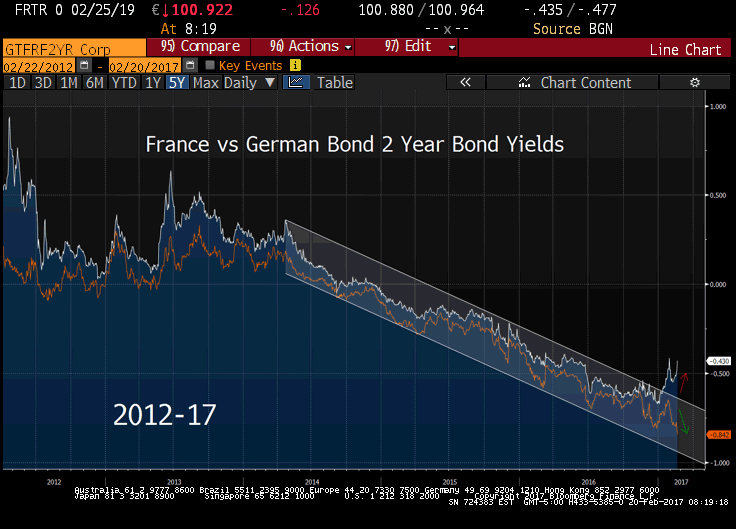 Over a 5 year perspective, French yields are still well contained, but the divergence from Germany is profound.
Over a 5 year perspective, French yields are still well contained, but the divergence from Germany is profound.
We have a full report going out today, pick it up here below:
Don’t miss our next trade idea. Get on the Bear Traps Report Today, click here
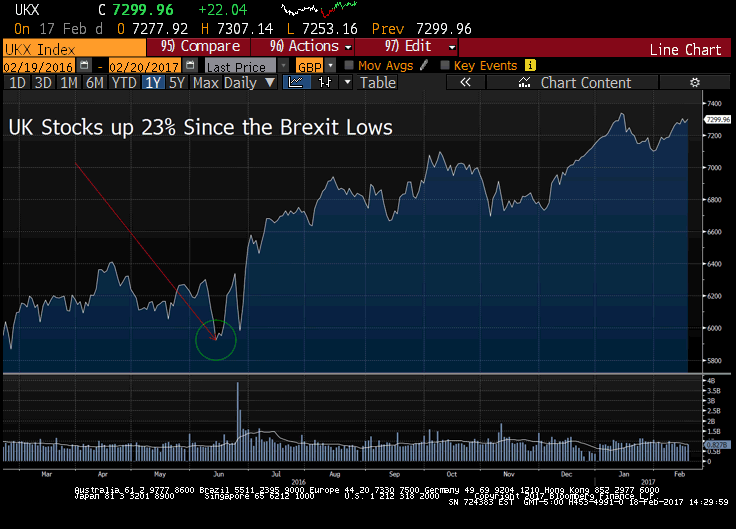 After all the Brexit horror headlines, UK stocks are up 23% from the June lows.
After all the Brexit horror headlines, UK stocks are up 23% from the June lows.